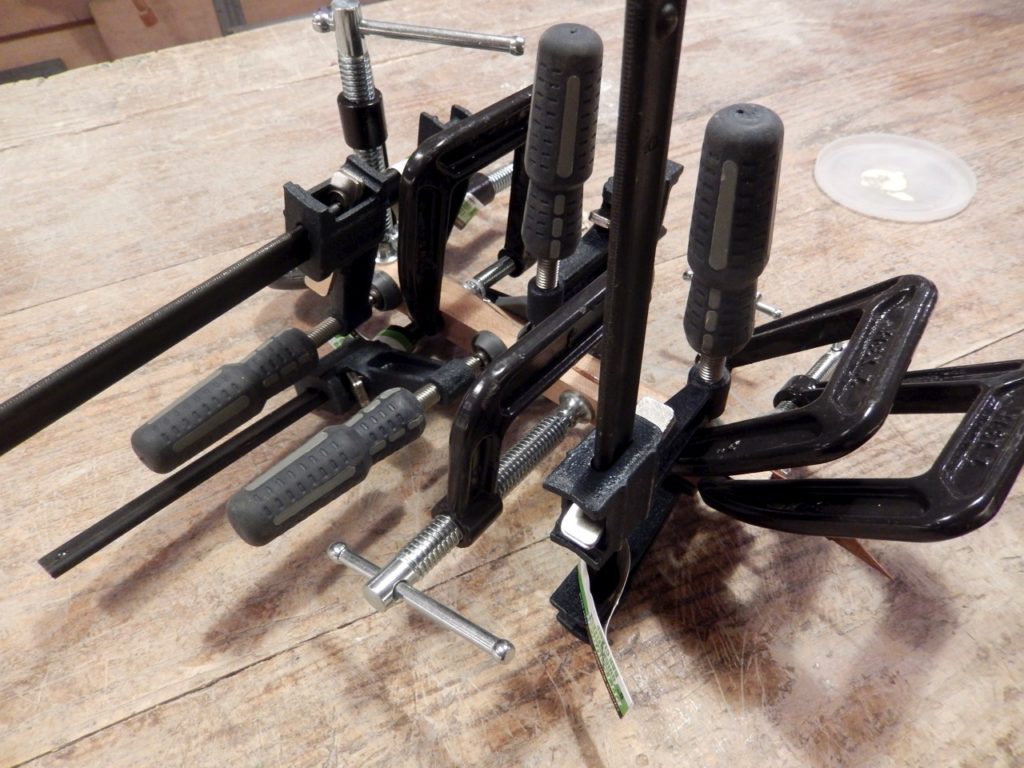We may receive a commission when you use our affiliate links. However, this does not impact our recommendations.
 Before taking my 9th grade students to visit Joseph Walsh’s exhibit last month (read more about the exhibit here), I made a mockup mold to show them how thin strips of wood (mahogany veneer in our case) can be persuaded to follow a three-dimensional path to form a helical shape, a curve, etc. I intended to demonstrate to them the advantages of complex wooden forms – whether steam bent or laminated – that are shaped with continuous grain flow, in contrast to the same forms cut from solid wood, which would be very impractical or inefficient to create and use.
Before taking my 9th grade students to visit Joseph Walsh’s exhibit last month (read more about the exhibit here), I made a mockup mold to show them how thin strips of wood (mahogany veneer in our case) can be persuaded to follow a three-dimensional path to form a helical shape, a curve, etc. I intended to demonstrate to them the advantages of complex wooden forms – whether steam bent or laminated – that are shaped with continuous grain flow, in contrast to the same forms cut from solid wood, which would be very impractical or inefficient to create and use.
To make the mockup I took a scrap piece of wood and passed it through the bandsaw while providing a moderate rotation. I did not intend to create a perfect helix, just to make a free form twist. After this, I affixed onto the inner surface two strips of packaging tape to prevent the veneer from adhering to the mold. Then I cut a few strips of veneer, spread glue on them and placed them in between the molds and clamped the veneer sandwich together for a few hours. After this, I released the form from the mold, planed and sanded it and applied a shellac finish. The helical stick that came out was a good enough representation of the technique that Joseph Walsh uses. So when we arrived at the exhibit floor, the students were able to relate to his art with a better understanding of what it means to force wood into a trajectory. Can this technique be adapted for small scale projects? Of course it can. You can think of many ways to incorporate small bent or twisted laminations in projects, from handles to candle stick holders and from making wooden floral elements to magic wands and utensils for kids. The possibilities are endless so just give it a try.



The new video
The same week that Mr. Walsh opened his show, the New York School of Interior Design organized a panel discussion on Joseph’s work. The video below is a recording of this event. It is infused with many images and short clips that depict the processes that Walsh uses when building his pieces. While the presenters are academics, rather than makers (except for Walsh of course) the 40-minute event is highly informative and inspiring to anyone who is interested in furniture design, woodworking and cutting edge design technology (and Irish design). If you are new to bent lamination techniques this video will surely whet your appetite and spark your creativity.
Here are some supplies and tools we find essential in our everyday work around the shop. We may receive a commission from sales referred by our links; however, we have carefully selected these products for their usefulness and quality.








